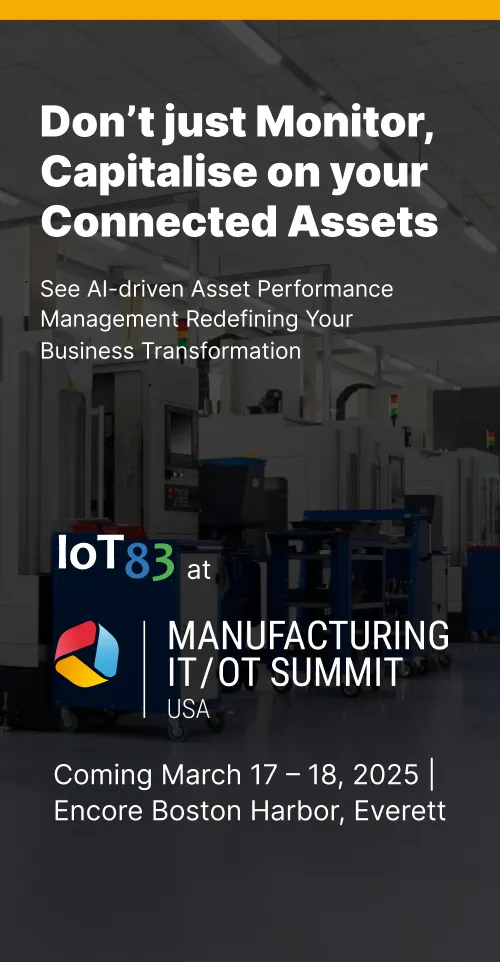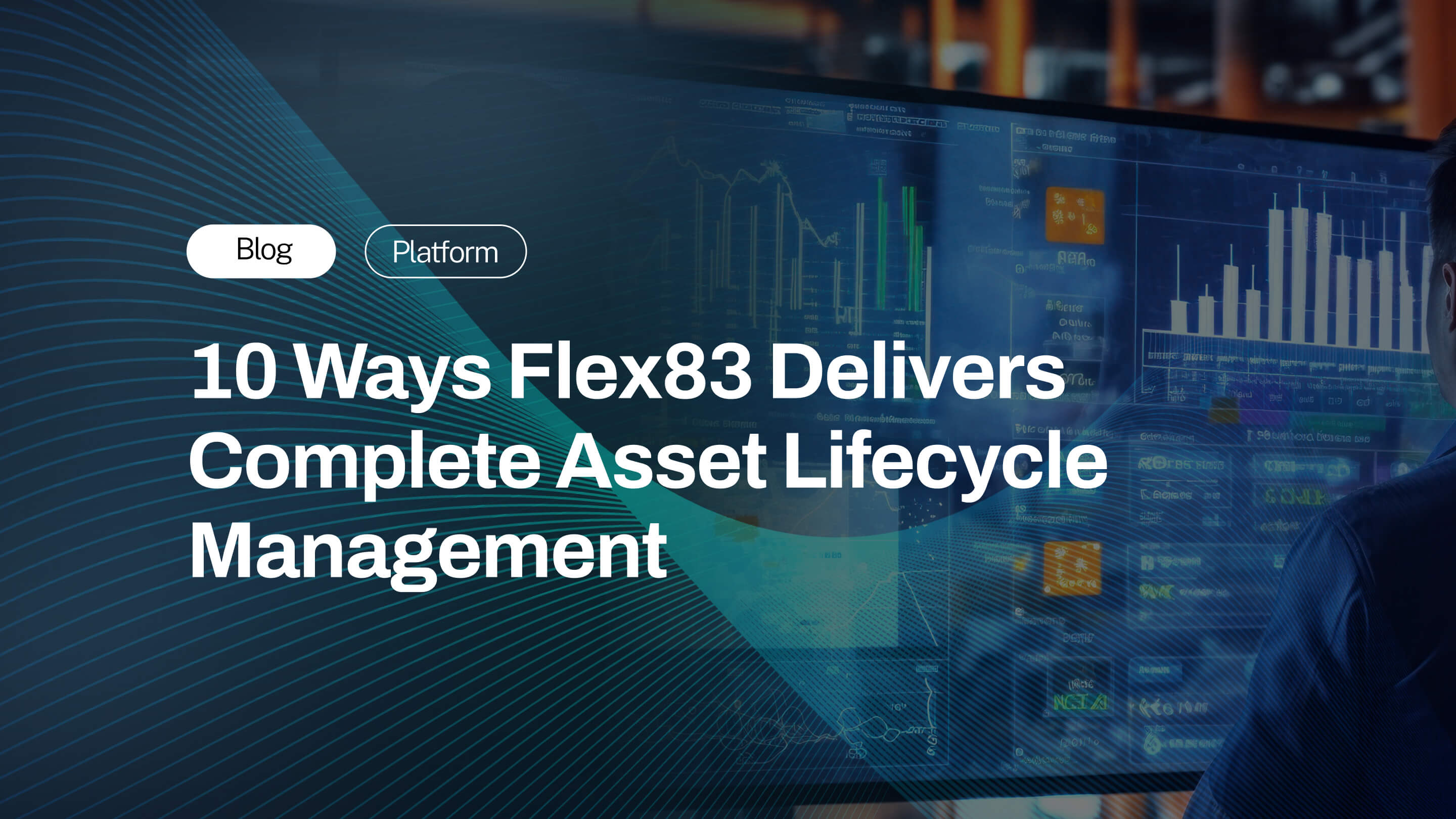Whether you build or buy an Industrial IoT platform, there are two main aspects that worry every OEM. First are the requirements to maintain security in the IoT platform. Keep track of the exponentially growing scale number of devices and the volume of data. Not maintaining it well can be a breaching window for attackers.
Second, there are security capabilities, from asset management to smart dashboard analytics, that depend on Industrial IoT platform providers.
What can you do as an individual or a firm if you are dependent on an IoT platform provider for end-to-end cybersecurity? Ensure your chosen platform has the best possible security approach while meeting your business requirements.
Ask These Questions to Your Platform Partner for Efficient Security
1. How Can OEMs Monitor Assets with Increasing Number?
As per the Cisco Survey, 58% of respondents said they want to gain comprehensive visibility on OT devices and industrial networks. Over time, OEMs end up with a collection of old and new assets connected to their network. Here, proper visibility is vital for maintaining an accurate inventory as well as preventing unmonitored devices from becoming entry points for attackers. An application enablement platform shines in real-time remote device monitoring and management and can even boost your ability to get a secure and scalable solution.
2. What About Having an External System for Security?
IoT devices often lack the capability to integrate with existing security frameworks and tools, making it difficult to apply uniform security policies across all devices and platforms. It's essential to have the ability to integrate any third-party systems or applications and tackle the ever-evolving cybersecurity challenges within the infrastructure to ensure a seamless defense mechanism.
3. What About Access and Security with Integrated APIs?
OEMs must ensure an appropriately used API irrespective of a web interface or deploying their own micro-services. Extending and enhancing the user interface is beneficial for getting your own value added to your users. This is where OEMs can get a smarter solution by trying to twist the API to your specific needs. It may give you short-term benefits but can result in unintended outcomes, such as API Privilege Escalation.

4. How do you manage data security?
Managing the vast amount of data coming from hundreds to millions of assets and then ensuring data privacy is a major concern for Industrial IoT solutions, as it contains sensitive information. When you are selecting an IoT platform provider, ask questions such as:
- What measures they have in place to ensure data privacy
- What are the data encryption methods used during the transmission and storage of data.
- What are the data access controls and how do they prevent unauthorized access to sensitive data.
- What is the provider’s data retention policy and procedure for data anonymization or data deletion.
5. Will It Be Easy to Manage Access and Restrictions for the Various Roles?
It is essential to define a list of features and functionalities your tenants can access on the IoT platform. This way, you can manage multi-tenancy efficiently in your application. Also, you must ensure your Industrial IoT solution complies with your corporate standards. Hence, OEMs must check that their IoT platform provides integration with IAM to provide you with complete freedom to allow or restrict any function for a specific role.
Continuous Integration and Continuous Deployment (CI/CD) practices are essential for ensuring the software development process incorporates security measures at every phase. Key aspects of CI/CD include:
- Secrets scans.
- Code quality checks.
- Code coverage analysis.
- Scan third-party vulnerabilities.
- Docker image scanning.
Incorporating these CI/CD practices into the IoT development process helps in early detection and remediation of security issues, leading to more secure deployments. It is vital in an era where IoT devices are increasingly becoming targets for cyberattacks.
Secret scans help detect hard-coded repositories like passwords, API keys, and other data sources, preventing potential security breaches.
Code quality checks ensure that the code adheres to best practices and standards, reducing the risk of security vulnerabilities.
Code coverage analysis identifies untested parts of the code, which are potential risk areas for security weaknesses.
Scanning for third-party vulnerabilities is crucial since IoT solutions rely on external libraries and frameworks. These scans help identify and remediate known vulnerabilities before they can be exploited.
Docker image scanning and image checksum validation are vital for ensuring that the containers used in the IoT environment are free from vulnerabilities and have not been tampered with.
6. Is Your IoT Platform Provider a CVE Registered Partner?
CVE (Common Vulnerabilities and Exposures) registered partners are authorized organizations to assign CVE IDs to vulnerabilities affecting products within their scope. These partners have demonstrated their commitment to cybersecurity by actively identifying, registering, and mitigating vulnerabilities. By partnering with a CVE-registered partner, you can ensure that your IoT platform is continually monitored for new vulnerabilities and that these vulnerabilities are formally recognized and documented.

This partnership facilitates the swift identification and remediation of security issues, enhancing the overall security posture of your IoT environment. A CVE-registered partner can also provide valuable insights into emerging security trends and vulnerabilities, enabling you to address potential security challenges proactively. This collaboration ensures that your IoT devices and platforms are secure by design and remain secure throughout their lifecycle.
Conclusion
These measures protect your IoT environment from current threats and prepare you to respond effectively to evolving cybersecurity challenges. As IoT innovations continue to grow, prioritizing cybersecurity in partnership with knowledgeable technology partners will be vital for maintaining the quality and trustworthiness of IoT solutions.
In conclusion, IoT83 can be the right choice if you are concerned about IoT security. We have all the metrics mentioned above, including the CVE registration, and we are responsible for receiving, processing, and disclosing IoT83 products and solution-related cybersecurity vulnerabilities. It is the designated window to release information about IoT83 product vulnerabilities. IoT83 encourages end-users, partners, suppliers, government agencies, vendors, industry associations, and independent researchers to report potential risks or vulnerabilities to PSIRT by email: security@iot83.com.






.jpg)

%20(1).jpg)



.jpg)